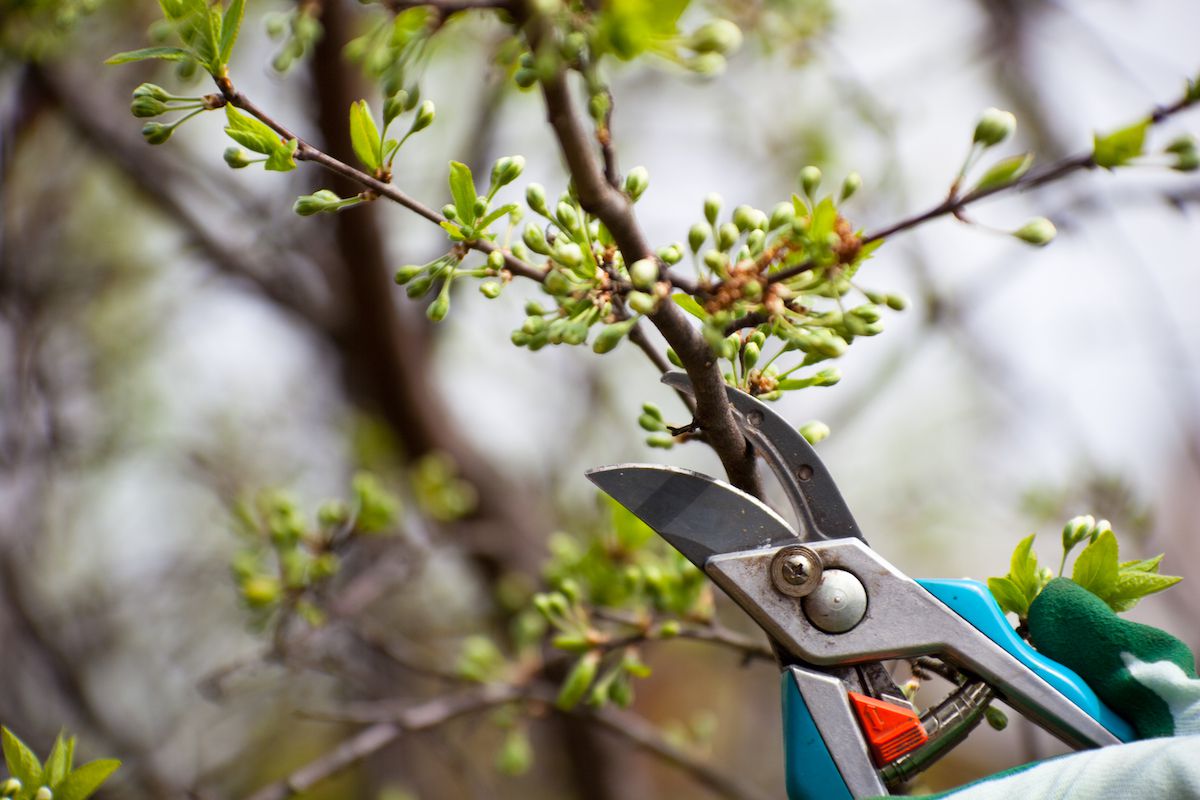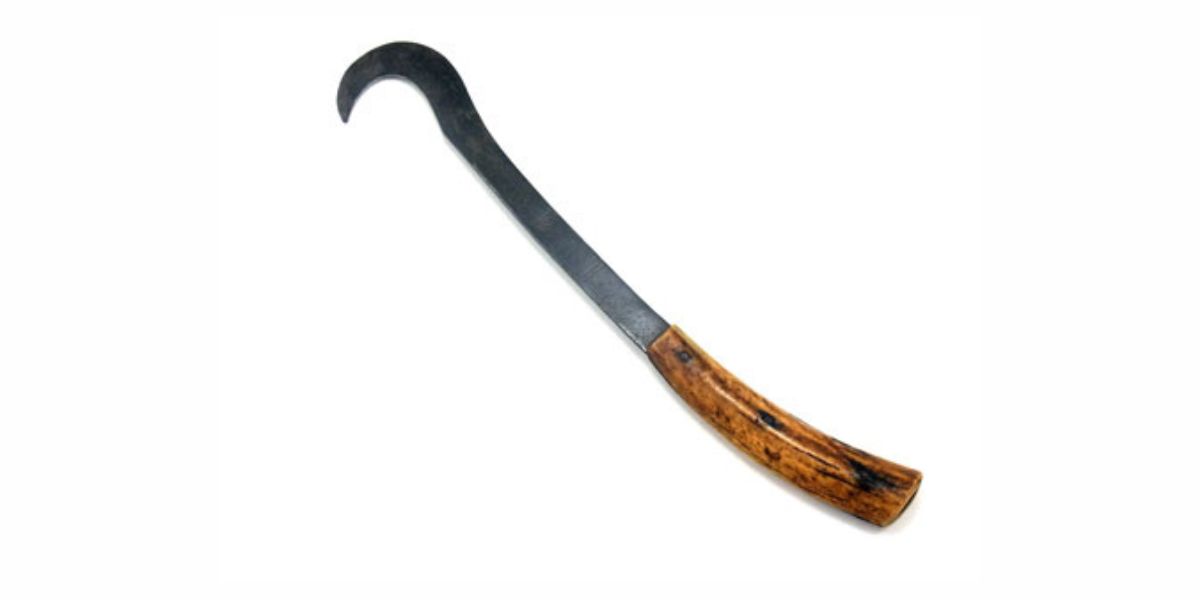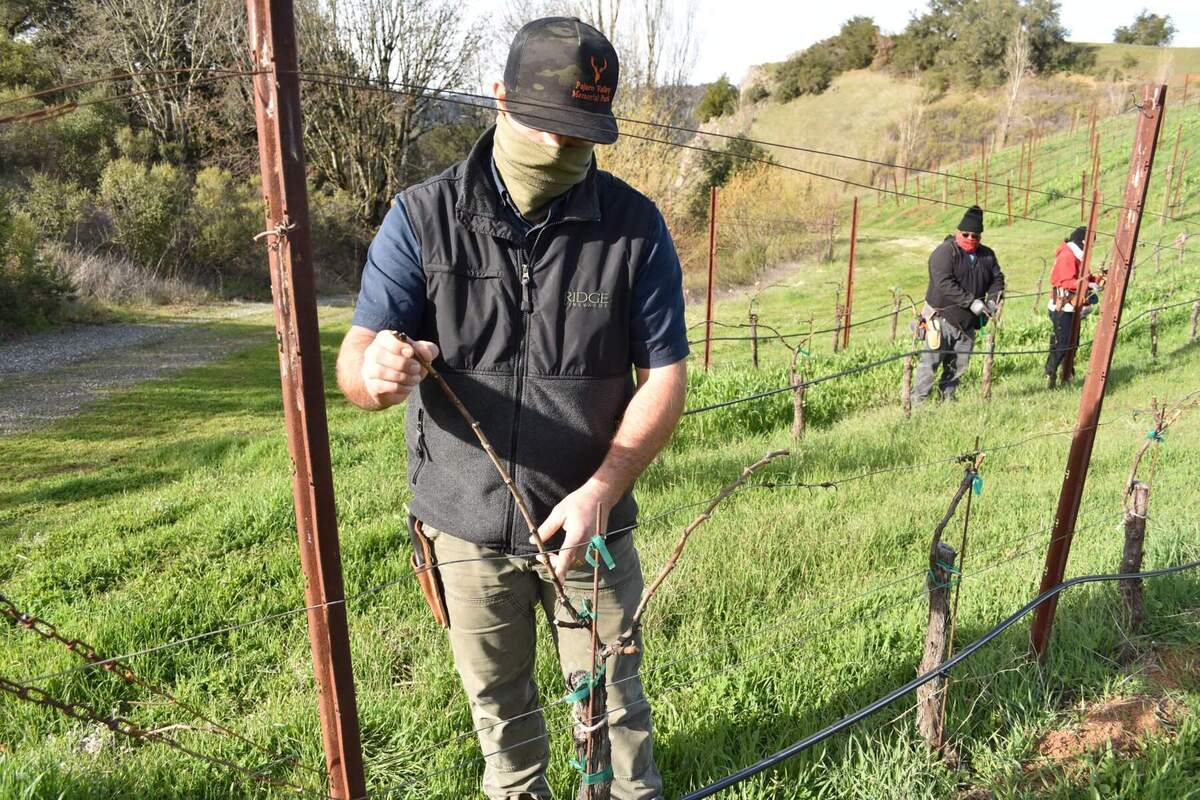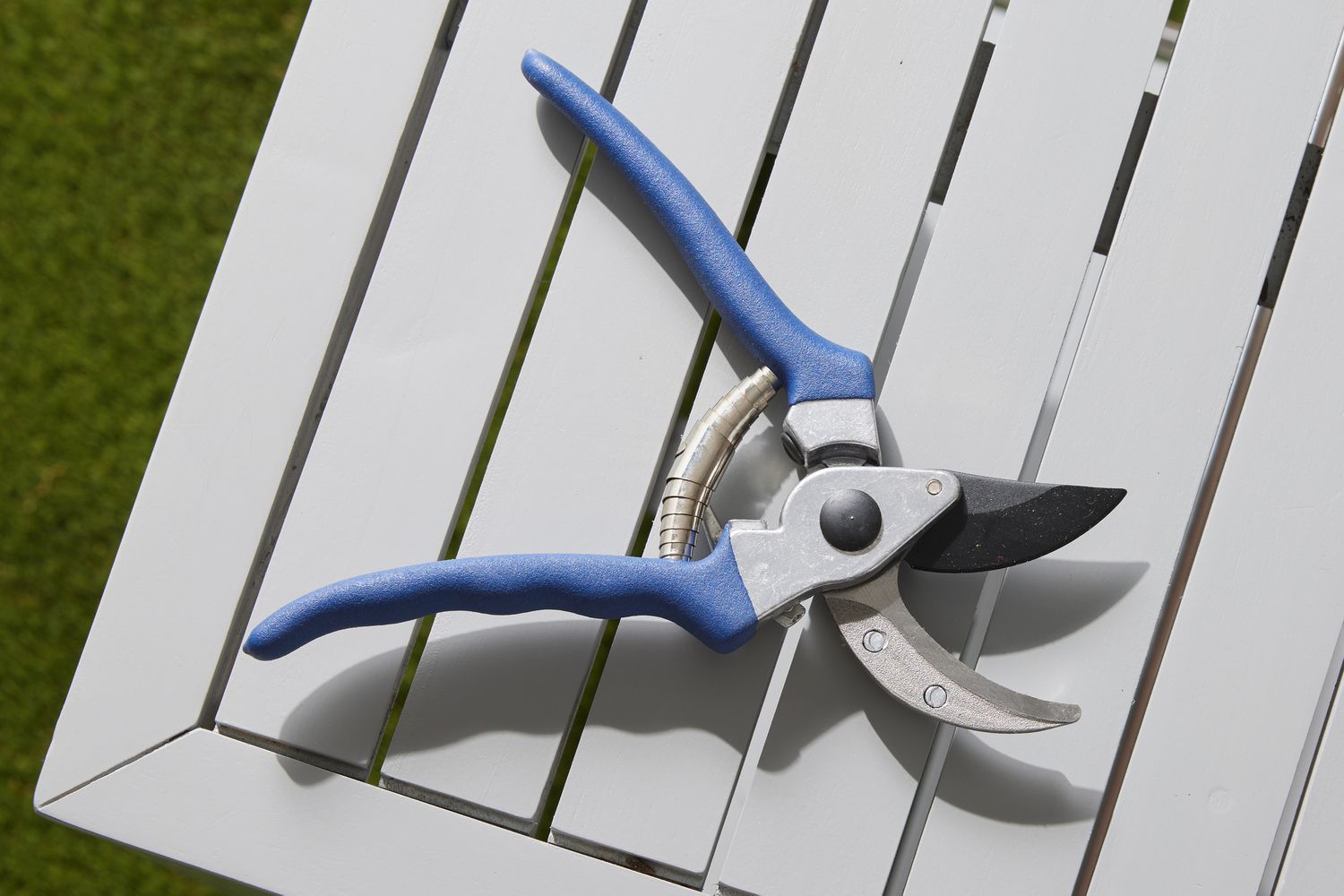Home>Gardening Techniques>Plant Care>What To Do With Branches After Pruning


Plant Care
What To Do With Branches After Pruning
Modified: January 22, 2024
Discover the best ways to manage and repurpose branches after pruning with our helpful plant care guide. Transform these leftover branches into useful materials.
(Many of the links in this article redirect to a specific reviewed product. Your purchase of these products through affiliate links helps to generate commission for Chicagolandgardening.com, at no extra cost. Learn more)
Table of Contents
Introduction
When it comes to plant care, pruning is an essential task that helps to promote healthy growth and maintain the overall appearance of your plants. However, once you’ve pruned your plants and are left with a pile of branches, you may wonder what to do with them. Luckily, there are several creative and environmentally-friendly ways to make use of those pruned branches.
Pruning branches not only helps to remove dead or diseased wood but also allows light and air to penetrate the plant, promoting new growth and preventing pest and disease infestations. While pruning is an important practice, it can leave you with a surplus of branches that need to be properly disposed of or repurposed.
In this article, we will explore various options for what to do with pruned branches, ranging from composting and mulching to creating decorative crafts and even donating them to local farms or gardens. By finding alternative uses for these branches, we can minimize waste and contribute to a more sustainable gardening practice.
Why Pruning Branches is Important
Pruning branches is a vital component of plant care for both aesthetic and health reasons. Here are a few key reasons why pruning is important:
- Promotes plant growth: Pruning encourages new growth by removing dead or damaged branches and stimulating dormant buds to sprout. This allows the plant to allocate energy more efficiently and produce healthier, fuller foliage.
- Enhances plant appearance: Regular pruning helps to maintain the overall shape and structure of a plant. It can also improve the plant’s visual appeal by removing overcrowded or unsightly branches, giving it a more balanced and pleasing form.
- Prevents pest and disease infestations: Pruning removes diseased or infested branches, preventing the spread of pests and diseases to other parts of the plant or neighboring plants. It also increases air circulation and sunlight penetration, creating an unfavorable environment for pathogens.
- Controls plant size: Some plants have a tendency to grow excessively, which can lead to overcrowding and overshadowing of nearby plants. Pruning helps control the size and spread of plants, ensuring they fit appropriately within their designated space.
- Improves fruit and flower production: By selectively removing certain branches, pruning can redirect the plant’s energy towards producing more flowers or fruits. This can result in larger, healthier, and more abundant yields.
Overall, pruning branches is a proactive measure that promotes the overall well-being, appearance, and productivity of your plants. It is important to understand the specific pruning requirements of each plant species to achieve the desired results.
Safety Precautions Before Handling Pruned Branches
Before you start handling pruned branches, it is crucial to prioritize safety to prevent any potential accidents or injuries. Here are some important safety precautions to keep in mind:
- Wear protective gear: When handling branches, especially large ones, it is recommended to wear gloves, safety goggles, and sturdy footwear to protect yourself from cuts, eye injuries, and falling debris.
- Use proper tools: Ensure that you are using the appropriate pruning tools, such as sharp shears or loppers, to make clean cuts. Dull or improper tools can lead to jagged cuts, making it difficult for the plant to heal properly.
- Be cautious of falling branches: Always be aware of overhead branches that may fall unexpectedly while you are pruning or handling other branches. Stay clear of any branches under tension or in precarious positions.
- Be mindful of electrical lines: If you are pruning trees or shrubs near power lines, exercise extreme caution and consider hiring a professional arborist to handle the pruning. Contact your local utility company for assistance or guidance.
- Proper waste disposal: After pruning, make sure to safely dispose of or repurpose the pruned branches. Bundle and tie them securely to prevent accidental tripping or scattering of branches.
- Know your limitations: Pruning heavy or tall branches can be hazardous. If you are unsure or uncomfortable with the task, it’s best to seek professional help to avoid endangering yourself or causing damage to the plant.
By following these safety precautions, you can minimize the risk of accidents and injuries while handling pruned branches. Remember, safety should always be your top priority when engaging in any gardening or pruning activities.
Composting Branches
Composting is an excellent way to turn your pruned branches into nutrient-rich compost for your garden. Here’s how you can compost your branches:
- Chop or shred the branches: Start by cutting the branches into smaller pieces or using a wood chipper or shredder to break them down. Smaller pieces will decompose faster and more efficiently in the compost pile.
- Create a compost pile or bin: Find a suitable location in your garden or yard for your compost pile or use a compost bin. Ensure the spot has good drainage and is easily accessible for future turning and maintenance.
- Layer the branches: Begin by adding a layer of organic materials, such as leaves, grass clippings, or kitchen scraps, at the bottom of the compost pile. Then, add a layer of the chopped branches on top. Alternate these layers until all the branches are used.
- Add nitrogen-rich materials: Balancing the carbon-to-nitrogen (C:N) ratio is crucial for successful composting. Since branches are high in carbon, add nitrogen-rich materials like green plant trimmings, vegetable scraps, or manure to provide the necessary nitrogen for decomposition.
- Moisten the pile: To promote decomposition, make sure the compost pile is moist but not overly wet. Water the pile occasionally to maintain a damp environment, similar to a well-squeezed sponge.
- Monitor and turn the compost: Regularly monitor the compost pile and turn it every few weeks to provide aeration and facilitate decomposition. This helps to break down the branches and other organic materials into rich, crumbly compost.
- Use the compost: Depending on the size of the branches and environmental conditions, composting them may take several months to a year. Once the compost is dark, crumbly, and earthy smelling, it is ready to be used as a nutrient-rich soil amendment in your garden.
Composting branches not only reduces waste but also enriches the soil with nutrients, improving overall soil health and promoting healthy plant growth. It’s a sustainable and eco-friendly way to give back to your garden.
Using Pruned Branches for Mulch
Another practical way to make use of pruned branches is by turning them into mulch. Mulching provides numerous benefits to your plants and garden. Here’s how you can use pruned branches as mulch:
- Prepare the branches: Cut the pruned branches into smaller pieces, around 2 to 3 inches in length. These smaller pieces will allow for better coverage and faster decomposition.
- Clear the area: Remove any weeds or existing grass from the area where you plan to apply the mulch. This will prevent them from growing through the mulch and competing with your plants for nutrients and moisture.
- Layer the branches: Spread a layer of the pruned branch pieces around your plants, ensuring the mulch is several inches thick but not touching the plant stems directly. Leave a small gap around the base of the plants to prevent moisture buildup and potential rotting.
- Water the mulch: Lightly water the mulch after application to help it settle and stay in place. This will also promote decomposition and improve the absorption of moisture into the soil.
- Maintain the mulch: Regularly check the mulch layer and replenish it as needed. As the branches decompose, they will add organic matter to the soil, improving soil structure and fertility.
Using pruned branches as mulch helps to conserve moisture, regulate soil temperature, suppress weed growth, and enhance soil fertility. Additionally, as the branches break down over time, they release nutrients into the soil, creating a beneficial environment for your plants.
Creating Decorative Crafts with Pruned Branches
Don’t let those pruned branches go to waste! Get creative and transform them into beautiful decorative crafts. Here are a few ideas to inspire you:
- Twig picture frames: Use smaller branches to create unique and rustic picture frames. Simply cut twigs to desired lengths and glue them together in a square or rectangular shape. Add a cardboard backing and insert your favorite photo or artwork for a charming display.
- Branch mobiles: Tie together various lengths of branches to create a whimsical mobile. Hang it from a porch, tree, or ceiling for a natural and eye-catching decoration. You can also attach other decorative elements like feathers or beads to enhance its visual appeal.
- Candle holders: Hollow out a section of a thick branch to create a natural candle holder. Sand the edges for a smooth finish and place a votive or pillar candle inside. This will add a cozy and rustic vibe to your home or outdoor setting.
- Natural wreaths: Gather smaller branches and intertwine them to form a wreath shape. Add dried flowers, feathers, or other embellishments to personalize it. Hang the wreath on your front door or use it as a centerpiece for a unique natural touch.
- Branch wall art: Arrange cut branches in a geometric pattern on a wooden board and secure them with nails or glue. Paint or stain the wood and branches to enhance the visual impact. Hang it on the wall for a striking and nature-inspired piece of art.
These are just a few examples of the many creative possibilities when it comes to using pruned branches for decorative crafts. Let your imagination run wild and explore different techniques and styles to add a touch of nature to your home or garden.
Donating Pruned Branches to Local Farms or Gardens
If you have pruned branches that are still in good condition and suitable for various uses, consider donating them to local farms or gardens. Here’s why this can be a beneficial option:
- Material for composting: Farms and gardens often have large-scale composting systems in place. Donating pruned branches to them provides a valuable source of organic matter, which can be turned into nutrient-rich compost to enrich the soil.
- Animal bedding or forage: Some farms have animals that can benefit from recycled branches. Certain animals, such as goats or rabbits, can use branches as bedding material or even food. Contact local farms to see if they can make use of the pruned branches for these purposes.
- Garden enhancements: Community gardens or public green spaces may welcome donated branches to create natural structures or features. Branches can be used for trellises, plant support, or even to create wildlife habitats, adding aesthetic appeal and environmental benefits to these spaces.
- Educational opportunities: Schools, nature centers, or educational institutions may be interested in using pruned branches for educational purposes. They can be used for art projects, nature crafts, or as learning tools to teach students about plants, ecosystems, or sustainability.
Before donating, make sure to contact the farm, garden, or organization to inquire about their specific needs and requirements. It’s also a good idea to prepare the branches for donation by bundling them securely and labeling them if necessary.
By donating pruned branches, you not only contribute to the local community but also extend the lifecycle of those branches, allowing them to serve a new purpose and benefiting the environment.
Repurposing Pruned Branches as Firewood
If you have pruned branches that are suitable for burning, repurposing them as firewood can be a practical and sustainable option. Here’s how you can make use of pruned branches for this purpose:
- Prepare the branches: Cut the branches into manageable lengths, typically around 12 to 18 inches, depending on the size of your fireplace or wood-burning stove.
- Season the wood: Freshly pruned branches have high moisture content, making them less effective as firewood. Allow the cut branches to dry and season for at least six months to a year in a well-ventilated area.
- Split larger branches: If you have larger branches, splitting them can help speed up the drying process and make them easier to handle. Use a splitting maul and proper safety precautions when splitting the wood.
- Store the firewood: Once the branches have seasoned, stack the firewood in a dry and sheltered area, ensuring good airflow. Protect the wood from rain or snow by covering it with a tarp or storing it in a shed or woodpile.
- Burn the firewood: When the colder months arrive, you can start using the pruned branches as firewood. Remember to follow fire safety guidelines and use appropriate firewood storage and handling practices.
Using pruned branches as firewood not only helps you save on heating costs but also minimizes waste by repurposing materials that would otherwise be discarded. However, make sure to check the local regulations and restrictions regarding burning wood in your area before proceeding.
It’s worth noting that not all trees or branches are suitable for firewood, as some may produce excessive smoke or sparks. Research and identify the ideal tree species for firewood, or consult with a local arborist or forestry expert for guidance.
By repurposing pruned branches as firewood, you can enjoy the warmth and ambiance of a crackling fire while practicing sustainability and resourcefulness in your plant care routine.
Conclusion
Pruning branches is an integral part of plant care, but it doesn’t have to end with discarded waste. There are numerous ways to repurpose pruned branches, adding value to your gardening efforts while minimizing environmental impact.
Composting branches provides a nutrient-rich soil amendment for your garden, promoting healthy plant growth. Using pruned branches as mulch helps conserve moisture, regulate soil temperature, and suppress weed growth.
For those feeling creative, transforming pruned branches into decorative crafts adds a natural and unique touch to your home or garden. Donating branches to local farms or gardens contributes to composting, animal bedding, and garden enhancements.
Alternatively, repurposing pruned branches as firewood offers a sustainable solution for heating while reducing waste. Remember to follow fire safety guidelines and check for local regulations before using branches as firewood.
By exploring these options, you can make the most out of pruned branches, turning them into valuable resources and contributing to a more environmentally-friendly gardening practice.
So, the next time you find yourself with a pile of pruned branches, think beyond waste disposal and consider the many possibilities that await to give new life to those branches.





